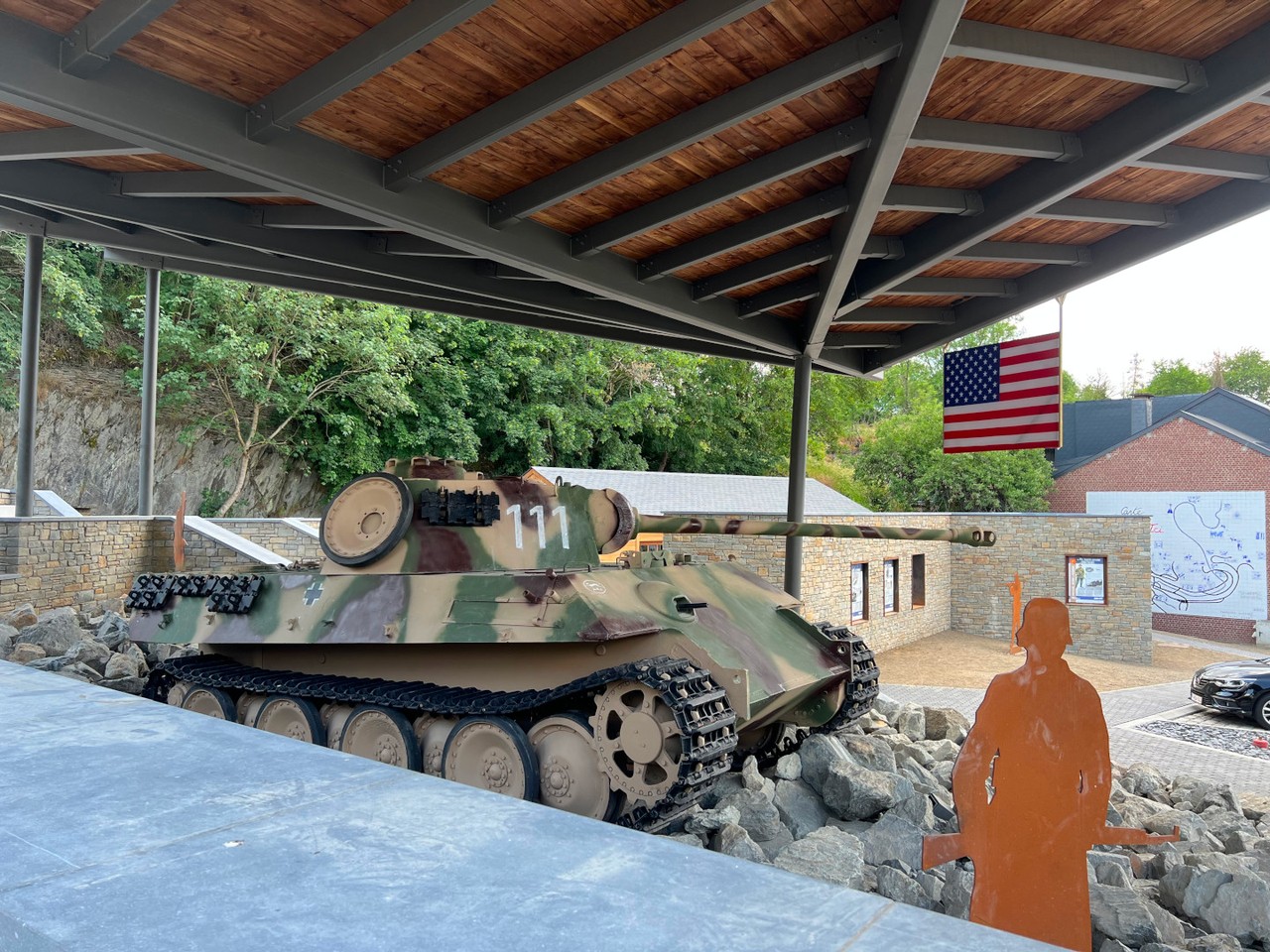The production of the Panther tank, which became the reference armored vehicle of the German army at the end of World War II, began at the end of 1942 in response to the arrival of the Russian T-34 tank on the Eastern Front. The Houffalize tank, a Panther Ausf. G numbered 111, was deployed from 1944 and fought in Normandy before retreating beyond the Seine, into Belgium, and then Germany. It was then sent back to the front in the Netherlands and Germany, before crossing Houffalize around December 19th with the 116th Armored Division heading towards Hotton.
It was during the Allied counteroffensive in January 1945 that the 111 was put out of service. On the eve of the junction of the 1st and 3rd American Armies on January 16th in Houffalize, the tank was covering the retreat of the 5th German Armored Army. While crossing the Ourthe bridge, heavily damaged by the terrible Allied bombings, part of the bridge's arches reportedly collapsed. The Panther overturned and was found headfirst in the water. The exact cause of the occupants' death remains unknown to this day. Their bodies were only found in 1947 when the Belgian engineers began the recovery maneuvers of the vehicle.
In 2023, the Panther 111 underwent a complete restoration by the Bastogne Barracks workshops and now stands proudly in Saint-Pair Square in memory of the town's painful events. The visit to the site is accompanied by a dozen educational panels and a permanent exhibition in a reconstructed period barrack, telling the story of this martyr town.
Place Roi Albert, 6660 Houffalize
info@houffalize-tourisme.be, 061 28 81 16
